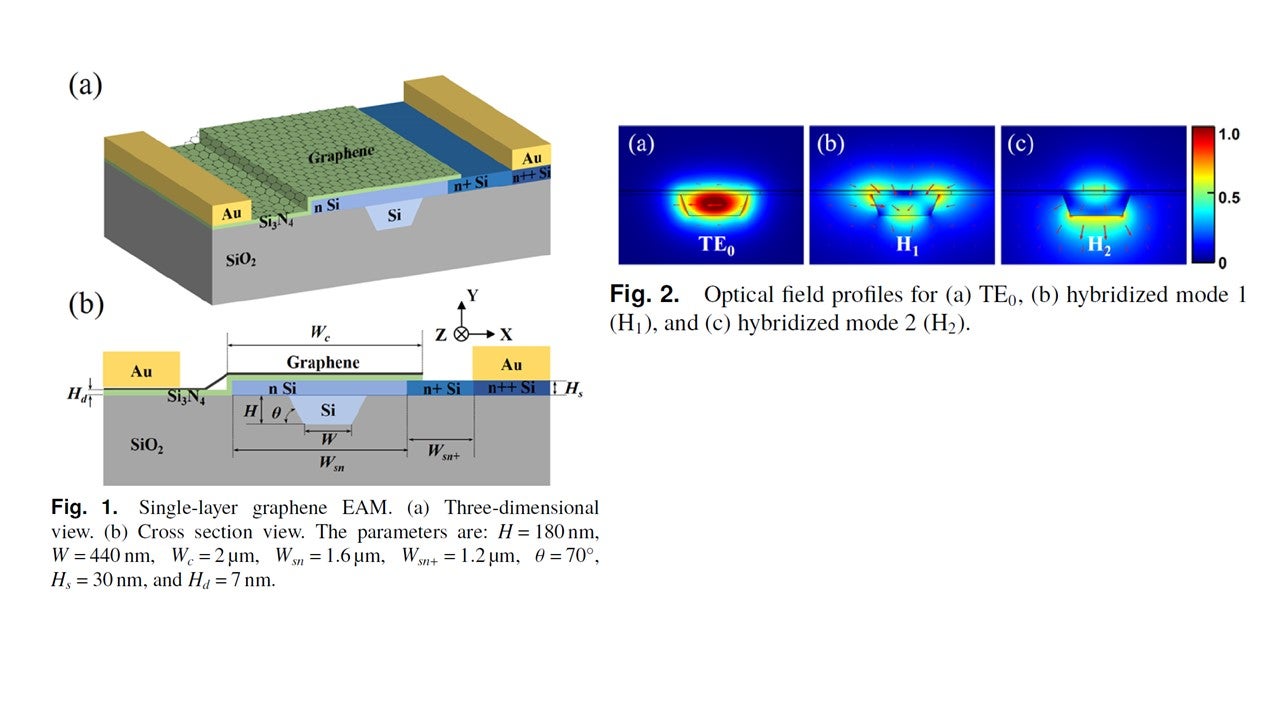-
-
May 1, 2024 at 1:42 pm
dubey
SubscriberHello, I am trying to replicate the result for the buried waveguide from the article (https://opg.optica.org/ol/abstract.cfm?uri=ol-49-5-1337). I am attaching the pic below in case you don't have access to the article. My question, how do I calculate and visualize the hybridized mode (H1 and H2) resulting from the combination of two mode TE1 and TM0 mode?

-
May 1, 2024 at 9:27 pm
Guilin Sun
Ansys EmployeeI beilieve that the mode-naming definition for photonic waveguide is not unique. Conventionally TE or TM means purely transverse Electric fields or Magnetic fields (or the other way). However when it comes to photonic waveguide, where the modes are tightly confined, many a time both E and H have non-zero longitudinal field compomnents. In such case it may need to compare the relative strength of the longitudinal fields to the transversal fields. That said, the modes are not "pure" TE or TM.
Return to your question, if you know the hybride modes are from "quasi" TE and TM, you can use FDE or FEEM to find them, and use the definition to get the hybride mode profile. eg, H1=TE1+TM0 where the TE and TM are realtively easy to define, and find from the solvers.
Please try and let me know if you have questions.
-
May 3, 2024 at 10:46 am
dubey
SubscriberHi, thank you very much for the valuable suggestion. However, FDE can calculate the mode individually (TE1, TM0), but I was wondering how can we really find resultant mode from adding two mode in FDE ( H1=TE1+TM0)? Is there any kind of script available?
-
May 3, 2024 at 2:00 pm
Guilin Sun
Ansys EmployeeYou can simply add the indivisual field components, such as Ex_TE1+Ex_TM0;Ey_TE1+Ey_TM0 etc. you can also renormalize them with the total mode intensity. Once you now the physics and math, it should be easy in scritping.
-
- The topic ‘Finding hzbridiesd mode’ is closed to new replies.



-
4492
-
1494
-
1376
-
1209
-
1021

© 2025 Copyright ANSYS, Inc. All rights reserved.







